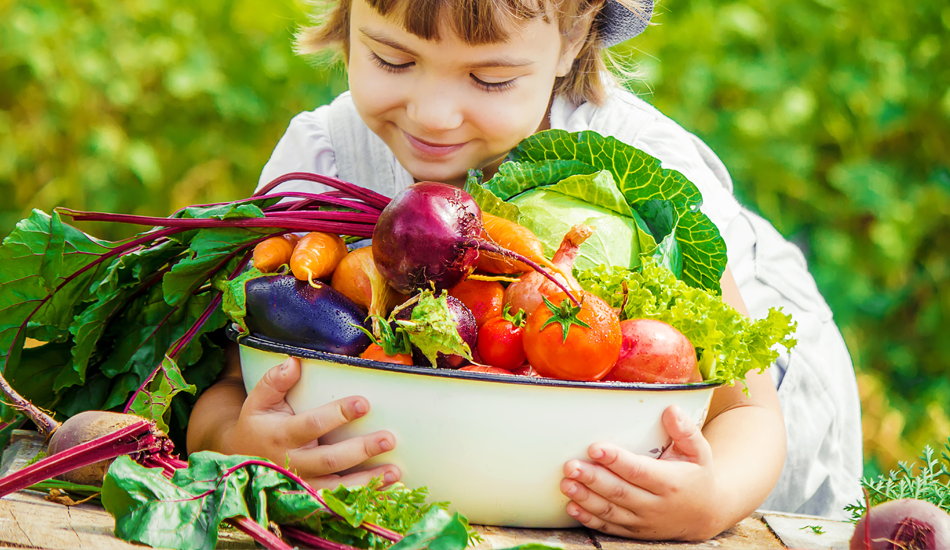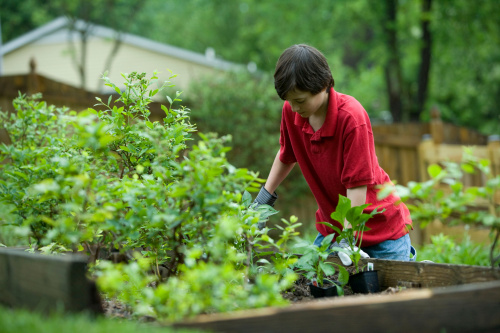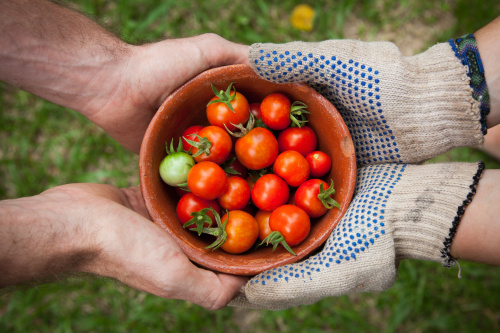
How to grow vegetable garden from the vegetable itself?
There are many benefits to growing your own food. Many people tend to throw away the seeds of vegetables and fruits they buy from stores. If you have some spare time, you can use these seeds to create a vegetable garden right at home. Here are a few things you need to start your first vegetable garden.

Choosing seeds
For beginners, it is ideal to start with plants that can be buried in good, loose soil. These include seeds of garlic, potato, chayote, ginger, and so on. “Garlic should be separated into cloves and planted with the fat end down; a potato should be cut into sections, each with at least a couple of eyes, and left to dry for a day or two before going into the ground; the chayote should be planted at a 45-degree angle. All take full sun except ginger,” according to the Los Angeles Times.
Seeds of tomatoes need to be fermented in order to become viable for planting. Grains like amaranth and quinoa should grow easily in the garden without much effort. Just sprinkle them on the garden bed, cover them lightly with soil, and water regularly. Choose seeds from the healthiest plants, looking at their characteristics like size, yield, maturity, disease resistance, and so on. Check that all seeds are ripened well before they are harvested. This will ensure that they mature enough and store sufficient nutrients to germinate and grow well.
Non-hybridized seeds
When you use seeds from store-bought veggies to set up a garden, you need to keep in mind that all seeds won’t be equally viable. Some seeds won’t grow into plants and bear fruit. The best way to identify such unviable seeds is to check whether the veggies are hybridized or non-hybridized varieties.
“Hybridized means the seeds were produced in such a way that their first-generation will bear fruit, but if you save seeds from that generation (for example, from a hybridized tomato at the grocery store) and plant them, they will not produce good produce. How do you avoid hybrids? Anything labeled ‘heirloom’ is definitely not a hybrid,” according to Networx.

Drying and storage
If you plan on storing the seeds for use in the future, you should dry them first. At best, the seeds should only contain moisture content in the range of 5 to 13 percent. Anything more than that risks making the seeds go bad. Do not dry them too fast since it can force the seeds to shrink and crack. Let the seeds dry in a temperature-controlled room. The best temperature to store seeds is between 33° and 40°.
Once you are satisfied with how the seeds have dried, put them in a breathable bag, preferably made of cotton. Keep the bag in a cool, dry area. Never let the seeds be directly exposed to air since they will absorb ambient moisture. Neither should you seal the seeds in a vacuum container since seeds do require a little bit of air to survive.
Healthy Soil
This is the foundation of your plants, so better make it good. If you are growing in pots, then consider choosing a good quality, organic potting or garden soil. If your garden will be in your yard, try adding in some compost or manure.
Germination test
Before you plant the seeds in your garden, do a germination test to see whether the seeds will grow as expected. Just plant some seeds in a small area and check the average time it takes to germinate. The germination rate is calculated by dividing the seeds that have germinated by the total number of seeds you have planted and multiplying the result by 100 percent. To ensure a good harvest, only plant seeds that have a germination rate of over 80 percent.

Water
Plants need water, so you will need a water source. A hose, a jug, a watering can filled in the sink – any of these will work! You just have to be consistent. Watering is very important and improper watering can be the difference between a good garden and a not-so-good garden.
Space
You need a place to put your garden. This can be anywhere that gets some sun. The amount of sun you need depends on your vegetables. The fastest-growing vegetables need full sun (at least 6 to 8 hours of direct sunlight a day) without blockage from trees, shrubs, or fences. You won’t have much luck growing these vegetables in the shade. However, there are some vegetables that do well in partial shade/partial sun. Do your research prior to deciding on your vegetable garden location.
Source:
https://www.visiontimes.com/2020/04/14/tips-for-growing-a-garden-from-store-bought-vegetables.html
https://www.diyncrafts.com/4732/repurpose/25-foods-can-re-grow-kitchen-scraps
https://www.danby.com/blog/10-simple-tips-to-grow-a-successful-vegetable-garden/




